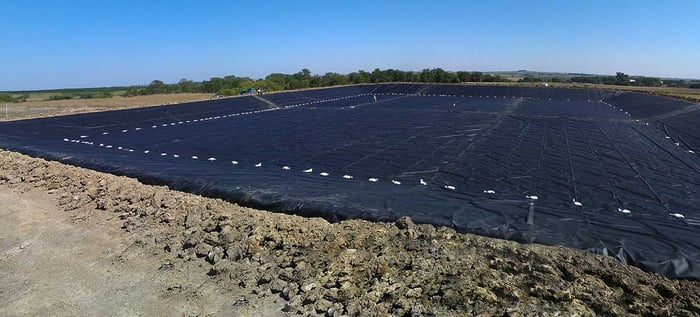Raven Industries (RAVN) announced fiscal fourth-quarter 2018 results on Tuesday after the market closed, highlighting double-digit growth in each of its three operating segments led by the hurricane-related strength of its engineered films division.
With shares of the mini-industrial conglomerate down modestly on Wednesday in response, let's take a closer look at how Raven capped the year, as well as what investors should expect from the company going forward.

IMAGE SOURCE: RAVEN INDUSTRIES.
Raven Industries results: The raw numbers
| Metric |
Fiscal Q4 2018* |
Fiscal Q4 2017 |
Year-Over-Year Growth |
|---|---|---|---|
|
Revenue |
$95.8 million |
$68.9 million |
39% |
|
Net income |
$8.4 million |
$4.4 million |
90.2% |
|
Earnings per diluted share |
$0.23 |
$0.12 |
91.7% |
DATA SOURCE: RAVEN INDUSTRIES. *FOR THE QUARTER ENDED JAN. 31, 2018
What happened with Raven Industries this quarter?
- Raven doesn't provide specific financial guidance. So, for perspective -- though we don't normally pay close attention to Wall Street's demands -- consensus estimates predicted slightly higher earnings of $0.27 per share on roughly the same revenue.
- Applied technology segment revenue climbed 17.8% to $30.5 million, despite "lackluster" agriculture market conditions, driven by new product introductions and the continued development of key OEM relationships. Applied Technology Operating income declined 8.7% to $5.8 million, driven by continued research and development investments aimed at driving long-term growth and taking market share.
- Subsequent to the end of the quarter, Raven launched a strategic initiative to grow its local presence in Brazil/Latin America and capitalize on one of the world's largest agriculture markets.
- Engineered films revenue climbed 61% to $55.6 million, driven by a combination of organic growth in the geomembrane and industrial markets, $15.8 million related to the delivery of recovery film in support of hurricane relief efforts (above expectations for $8 million to $9 million), and $7.9 million in sales from last quarter's acquisition of Colorado Linings International. Engineered films operating income grew 125.2% to $11.9 million.
- Aerostar sales increased 11.8% to $9.8 million, driven by stratospheric balloon platform growth. Aerostar incurred a small operating loss during the quarter -- something the company insists is not consistent with its long-term expectations for the segment -- due to a combination of unfavorable product mix and contract timing.
- Net income included a $0.4 million (or $0.01 per share) impact related to costs for "Project Atlas," the company's strategic initiative announced last quarter to replace its existing enterprise resource planning platform.
What management had to say
CEO Dan Rykhus stated he was "very pleased" with the performance of each operating division to end the fiscal year, adding:
Raven Industries is well positioned as we enter fiscal 2019 because of the actions taken and investments made to preserve and strengthen our core business. Furthermore, we are evaluating strategic acquisitions and will continue to invest in additional manufacturing capacity and technology development to enhance our core product lines. Our goal remains to generate 10 percent annualized earnings growth over the long-term, excluding unusual and generally non-recurring items.
Looking forward
Raven Industries doesn't provide specific financial guidance. But, as usual, Rykhus offered some color on their expectations for each segment.
First, Applied Technology should continue to grow in spite of difficult market conditions, and Raven plans to continue to dedicate resources toward long-term investments including its increased presence in Latin America.
Meanwhile, Raven will invest in additional capacity for engineered films in fiscal 2019 as it works to capture incremental growth opportunities. But while hurricane-related orders should contribute around $9 million in sales for the fiscal first quarter, engineered films revenue is expected to return to a lower run rate consistent with prior years starting in the second quarter.
Finally, Rykhus noted that Aerostar is honing its focus on the stratospheric balloon industry, and so divested "a few non-strategic portions of its business" in recent months.
"Strong performance on existing programs is driving confidence for continued growth with Aerostar's stratospheric balloon platform," Rykhus concluded.
In the end, there were no big surprises this quarter from Raven Industries -- and that's a good thing. Rather, the company continued to deliver steady, broad-based growth while simultaneously working to streamline its operations and invest in its future.
With shares still up nearly 30% from their 52-week low set last August, I think investors should be more than pleased with Raven as it operates from a position of strength today.





